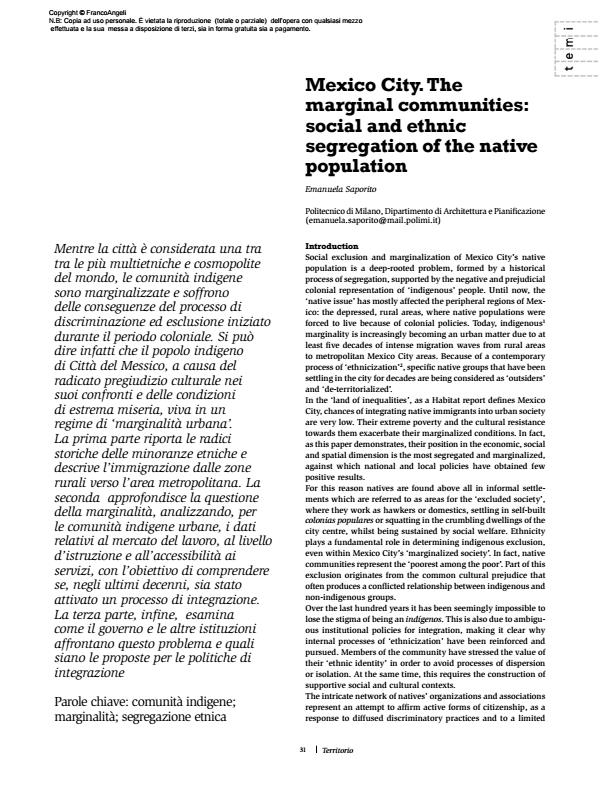Mexico City. The marginal communities: social and ethnic segregation of the native population
Journal title TERRITORIO
Author/s Emanuela Saporito
Publishing Year 2011 Issue 2011/57
Language English Pages 14 P. 31-44 File size 1508 KB
DOI 10.3280/TR2011-057004
DOI is like a bar code for intellectual property: to have more infomation
click here
Below, you can see the article first page
If you want to buy this article in PDF format, you can do it, following the instructions to buy download credits

FrancoAngeli is member of Publishers International Linking Association, Inc (PILA), a not-for-profit association which run the CrossRef service enabling links to and from online scholarly content.
The article focuses on persistent ethnic and social problems in Mexico City’s indigenous communities. While the city is considered one of the most ethnically mixed and cosmopolitan in the world, its indigenous communities are marginalised and suffer the consequences of a discrimination and exclusion process that began during the colonial period. It can actually be said that because of ingrained cultural bias and conditions of extreme poverty, Mexico City’s indigenous population lives in a situation of ‘urban marginality’ (Wacquant, 2008). The first part describes the historical roots of these ethnic minorities and describes the migration from rural areas to the metropolis. The second part explores the question of marginality, analysing data for the labour market, education and accessibility to services urban indigenous communities, with the aim of understanding whether an integration process has been triggered in recent decades. The third part examines how the government and other institutions are dealing with this problem and proposals for integration policies.
Keywords: Indigenous communities; marginality; ethnic segregation
- Penal Statecraft in the Latin American City Markus-Michael Müller, in Social & Legal Studies /2013 pp.441
DOI: 10.1177/0964663913482932
Emanuela Saporito, Mexico City. The marginal communities: social and ethnic segregation of the native population in "TERRITORIO" 57/2011, pp 31-44, DOI: 10.3280/TR2011-057004